There’s more to Whittington than just its press.
Situated about six miles east of Cheltenham, the Gloucestershire village of Whittington amounts to a small cluster of buildings attached to a modest Tudor country house named Whittington Court. But, to the world of fine book collectors, the unassuming village is synonymous with the private press to which it lends its name. Whittington: Aspects of a Cotswold Village offers an intimate glimpse of that village in the closing decade of the twentieth century through the eyes of Miriam Macgregor, the Whittington press’ author-engraver-illustrator-compositor extraordinaire.
The book was limited to 350 copies. Fifty of these were specials, quarter-bound in red leather and presented with a portfolio of twelve engravings. Here, though, I’ll be looking at one of the 300 standard copies. The book arrives in a brown portfolio of thin card, which opens like an envelope to allow the volume to slide out. There’s a paper title label on the portfolio’s spine.
Removing the quarto-sized book from its encasement, we find it quarter bound in russet cloth over light brown paper-covered boards. The whole is wrapped in a dust jacket that folds-out to reveal a six-panel panoramic colour relief print view of Whittington in the snow. It’s quite impressive when you take the time to unfold it:

The end papers are of the same colour as the boards. The book proper is printed on a fairly heavy Zerkall mould made paper with a smooth surface and an ivory colour, bound into the book with bright white head and tail bands. As usual the Zerkall paper feels good to handle and, at this weight, has good opacity. Its top edge is trimmed while the bottom and fore edges are left deckled. The text is set in 12pt Bell and was printed letterpress. Although unpaginated, the book has around 44 pages.
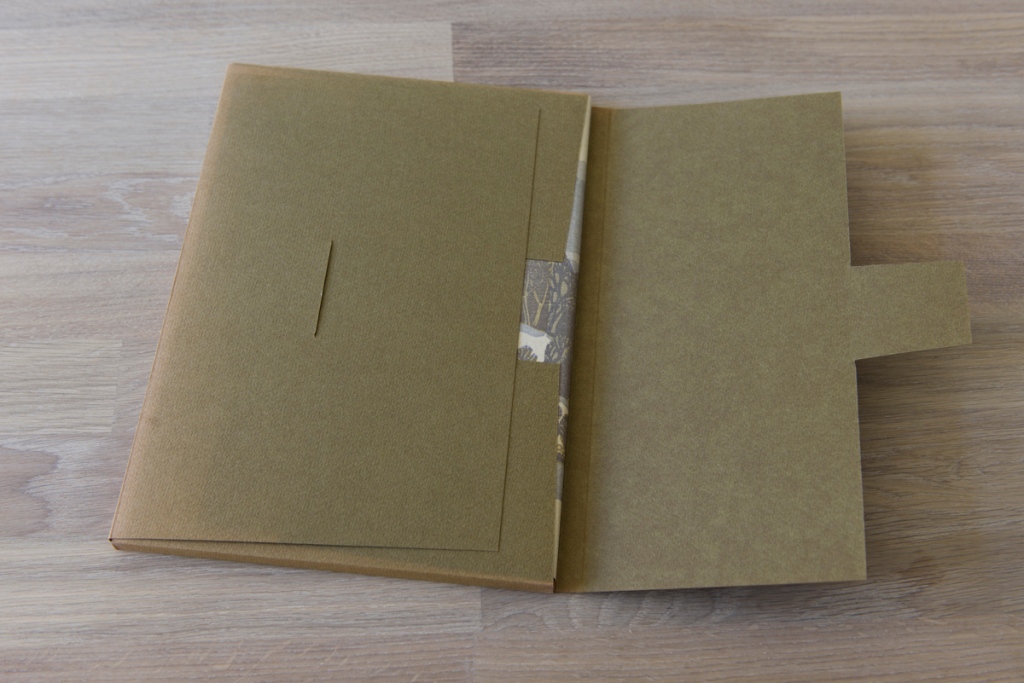
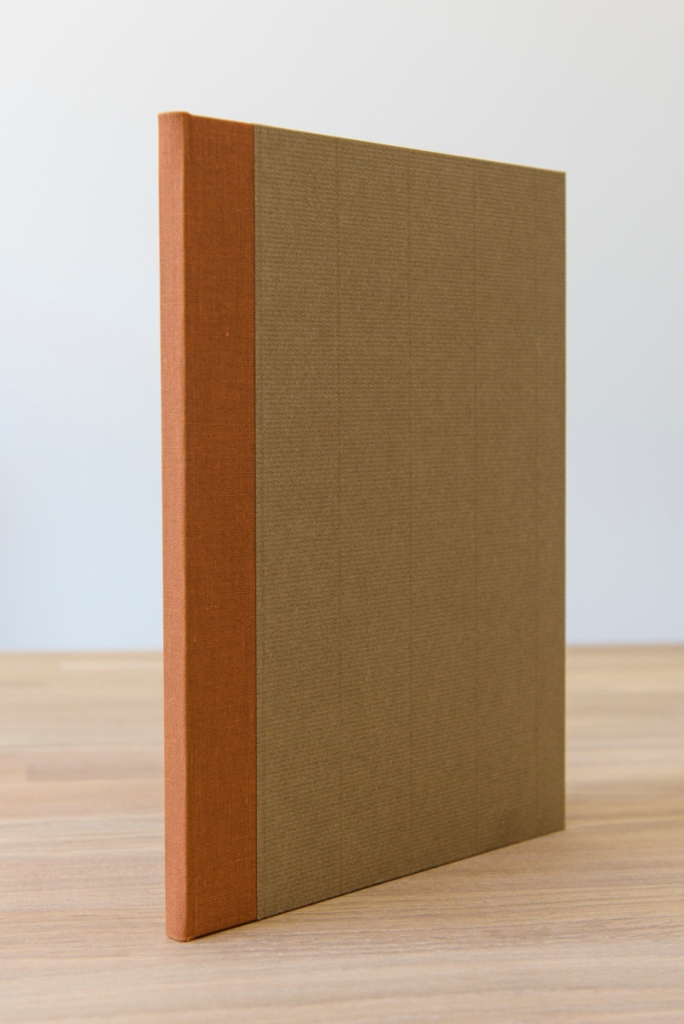
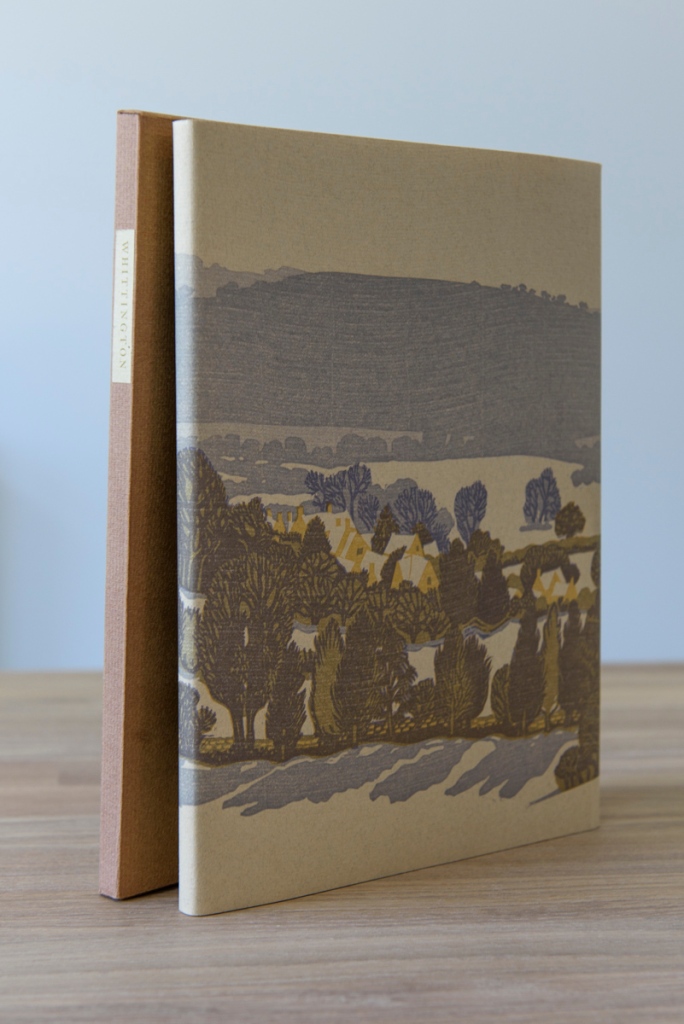
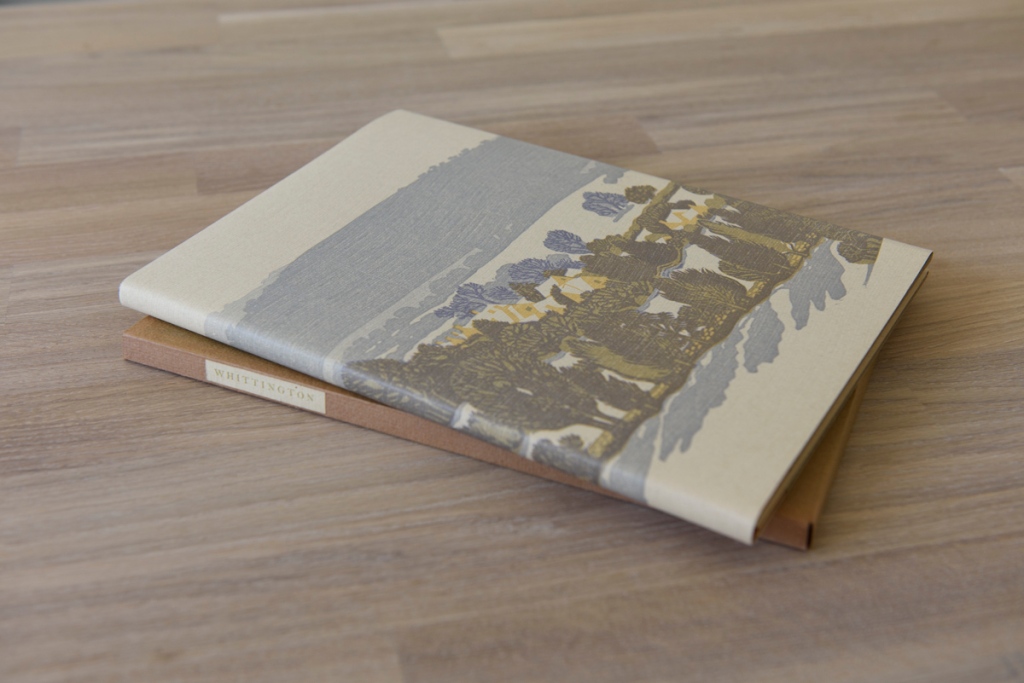
Inside we find 34 wood engravings by Miriam Macgregor, starting with a a colour print of a hot air balloon over the village that serves as a frontispiece. The title page that faces it is a simple affair printed in black and ochre ink. There’s a four-page introduction by Macgregor that serves a number of purposes. First, it sets expectations: this is not intended as a complete portrait of Whittington, but rather to capture parts of the village on the cusp of change. Second, it offers a brief history of the village by way of background to the images that follow. The introduction is punctuated with some small engravings. Then we move into the engravings proper. Each two-page spread bears one or two engravings printed in black ink. They are accompanied by a short passage of descriptive text, printed in italics in ochre. A pro-typical example:
February, three years ago. The sewer has arrived, and enormous yellow beasts drag themselves through the mud and rain creating a world of havoc. A more convincing drain was laid down the main street to serve the cottages under the hill. Although Mrs Davies and Mrs Hadland look on with excitement, not all the cottagers welcomed it, and the drain came to a halt outside Mrs Hooper’s garden.
Miriam Macgregor, Whittington: Aspects of a Cotswold Village
It’s amazing to think that there were villages in England without a sewer in the late 1980s, especially when those same villages are a mere six miles from a major urban centre.
Conspicuous in its absence from the locations featured is the press itself. This is a book about the community that surrounds it, and is no worse for it.
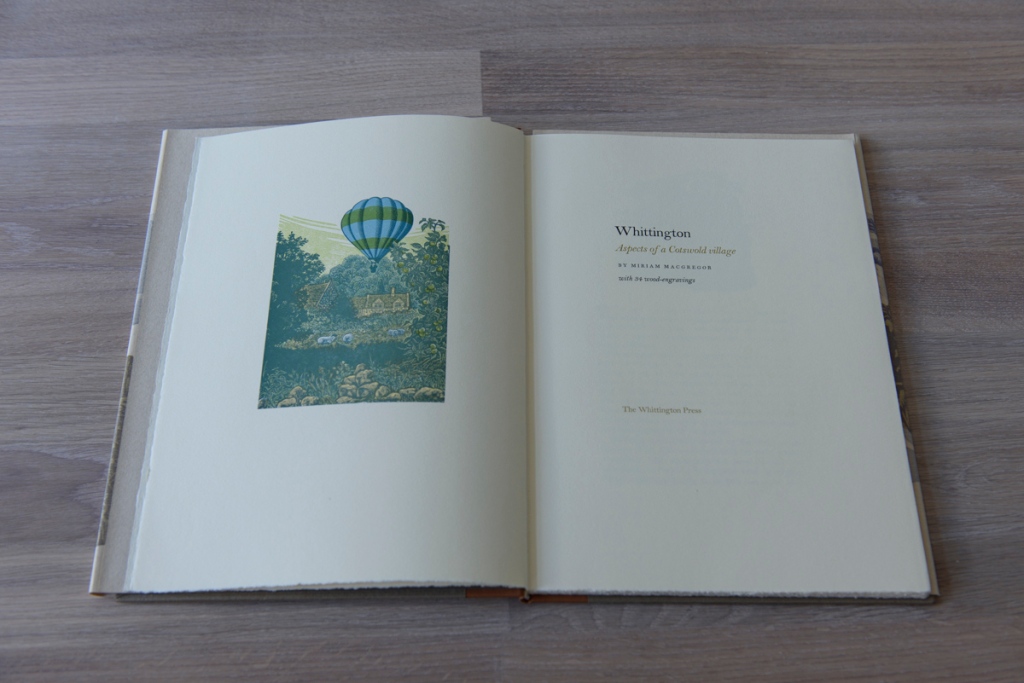
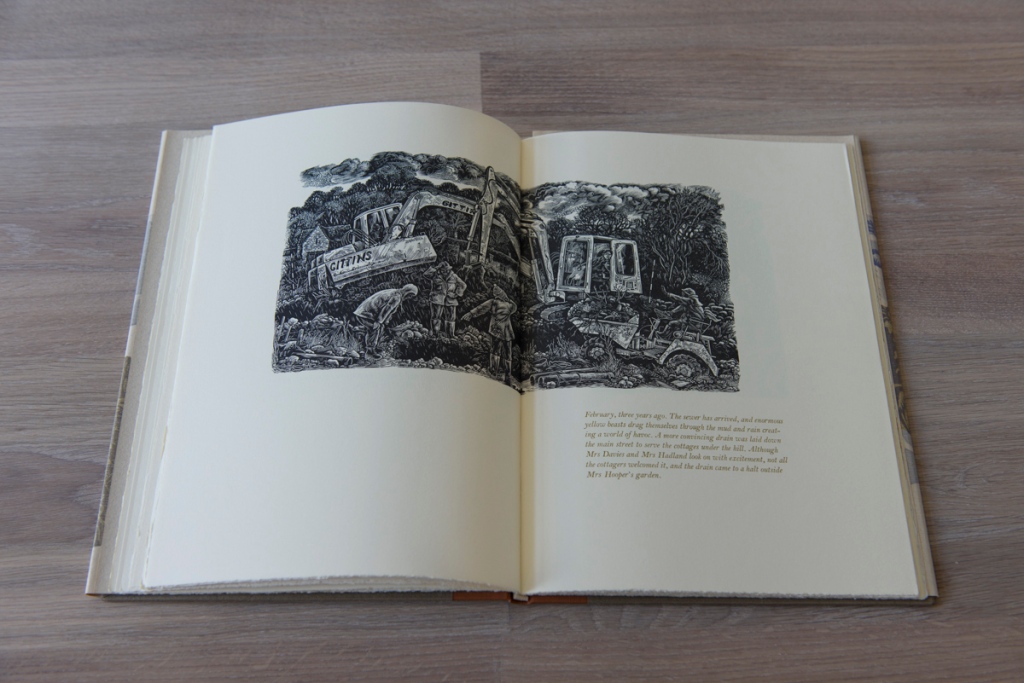
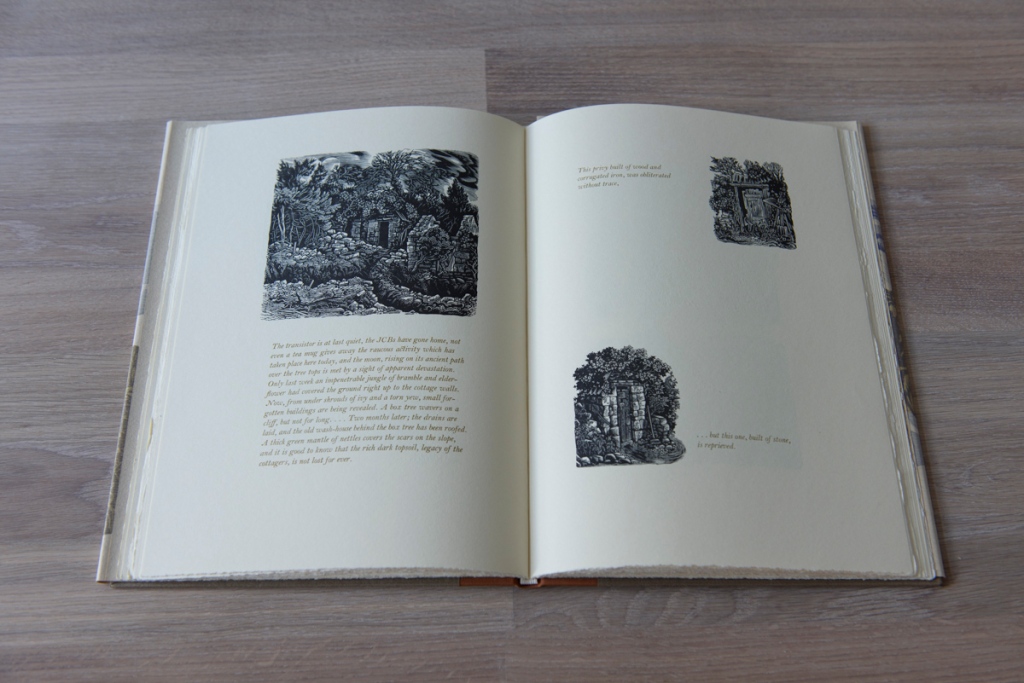
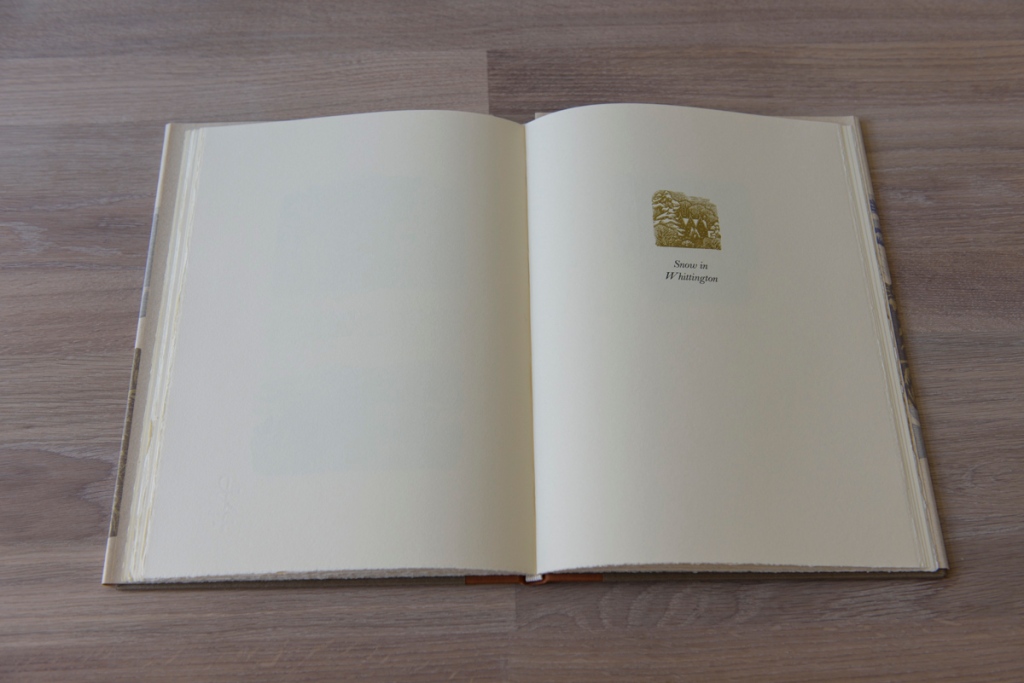
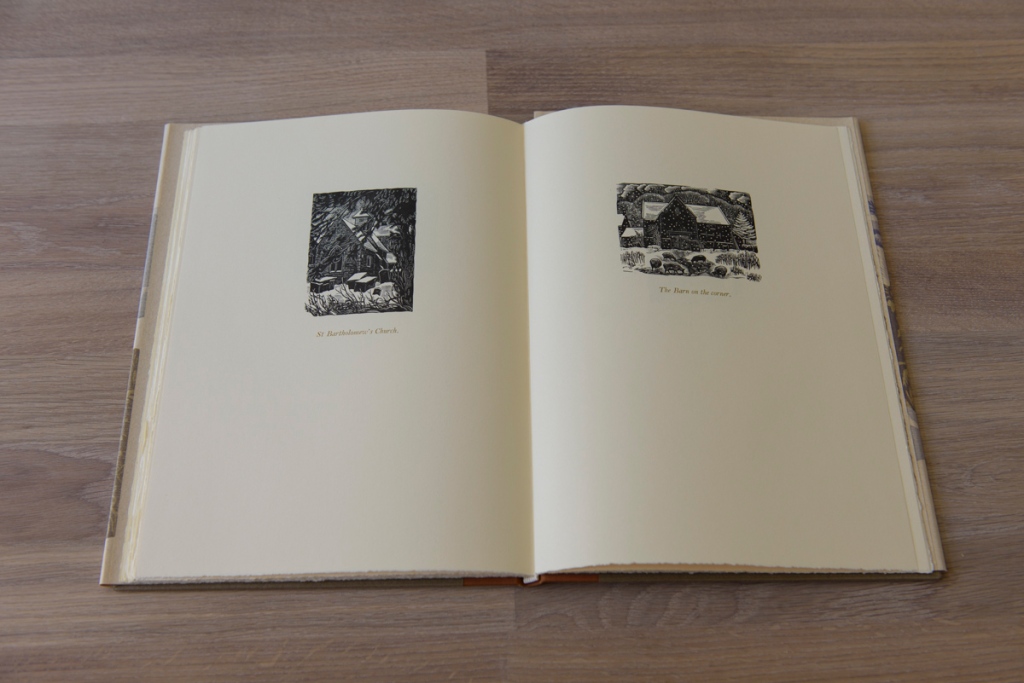
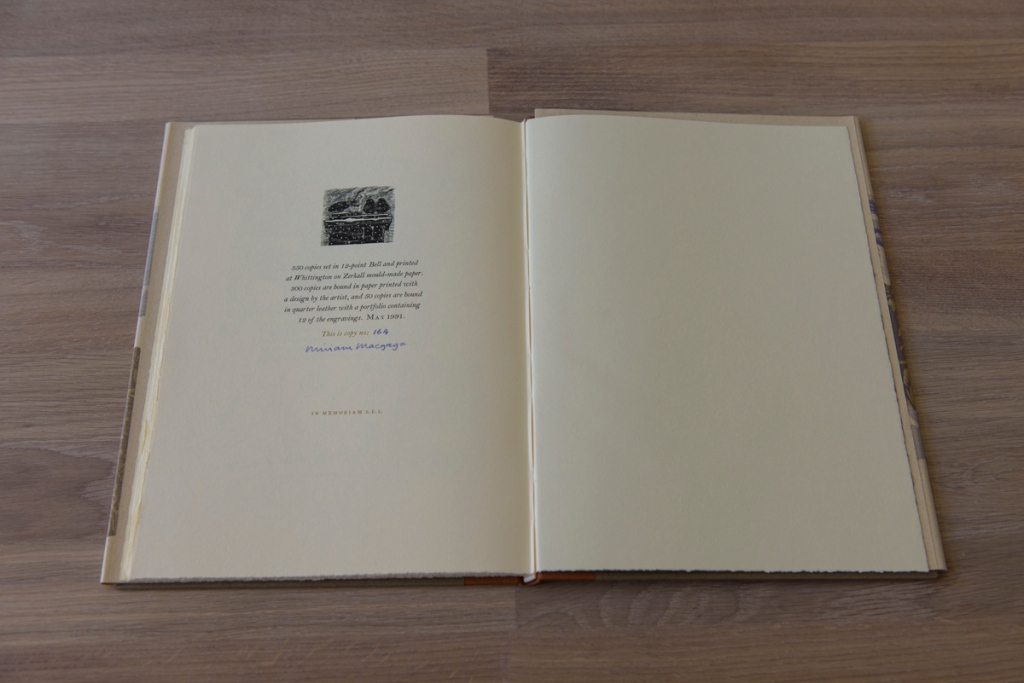
After about two-dozen engravings presented in this way, our tour of Whittington comes to an end. But the book is not finished. Next come nine engravings that document Whittington under an unusually heavy snowfall. They are labelled with shorter captions like “The Barn on the corner”. Lastly, there’s a map of the village by the author printed in ochre ink. I wish the map had been at the start to help me get my bearings when viewing the engravings, but it’s good to have. The book ends with a colophon page that gives some production details. It is hand-numbered and signed by Macgregor.
Taken as a whole, the book is successful at developing an intimate sense of place, thanks in no small part to the many quaint details in engravings and text alike. It’s no wonder that John Randle, writing in The Whittington Press: A Bibliography 1982-93, described this book as a personal favourite among the press’ output. A fun exercise is to take a virtual stroll around Whittington using Google StreetView to see how much has changed. As often in bucolic English life, the answer is very little, although many of the cottages now look better maintained and one suspects some are now the luxury country homes of city workers escaping to the Cotswolds.
The typographical design may be a little plain, but this unassuming plainness along with the the ochre ink pushes the text into the background and allows the engravings—stars of the show—to come to the fore. I like the engravings very much and the quality of their reproduction is excellent, as usual for the Whittington Press. ■
Where to buy
You can search for this edition on eBay US*, eBay UK*, AbeBooks US*, or AbeBooks UK*.
Or browse more generally for Whittington Press books at
eBay US*, eBay UK*, AbeBooks US*, or AbeBooks UK*.
* These are affiliate links. Buying a book via one of these links produces a modest revenue for this site at no additional cost to you. Any revenue thus generated is recycled into providing more content for the site.
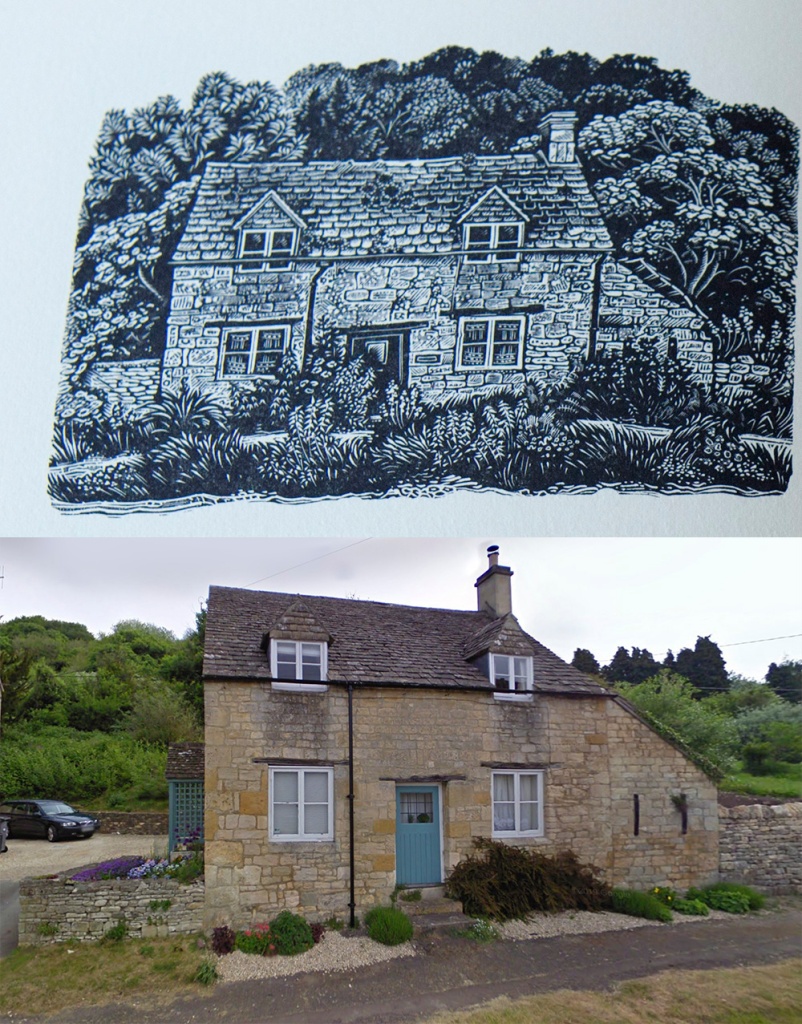

3 thoughts on “Whittington: Aspects of a Cotswold Village by Miriam Macgregor (Whittington Press, 1991)”